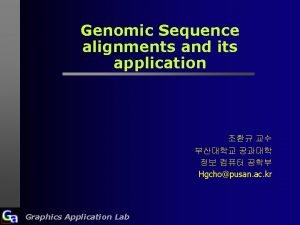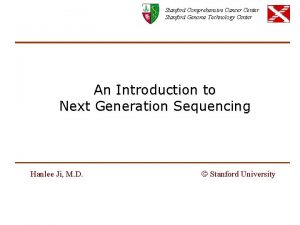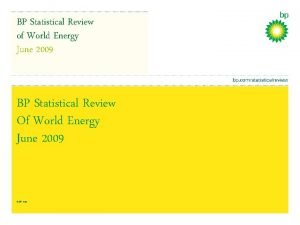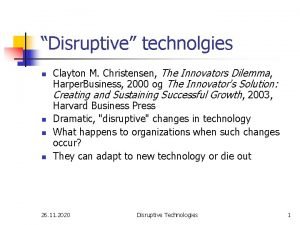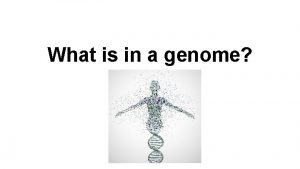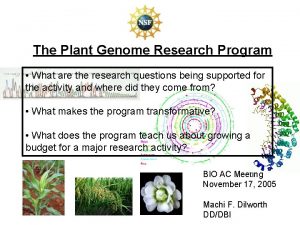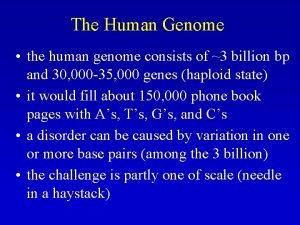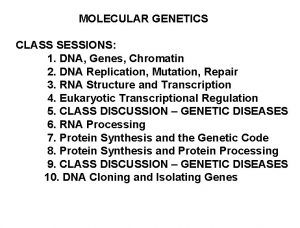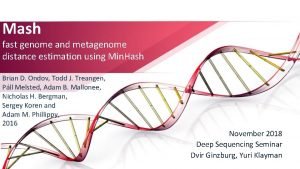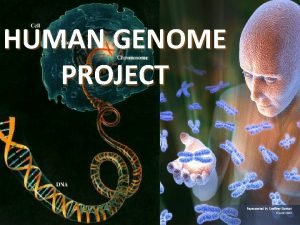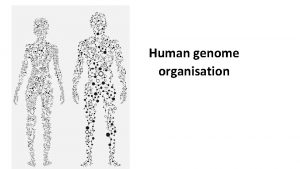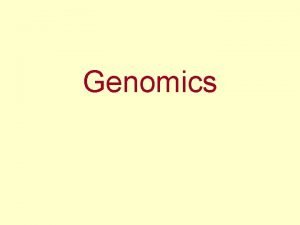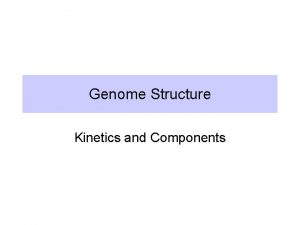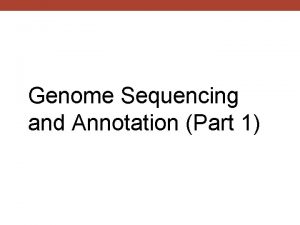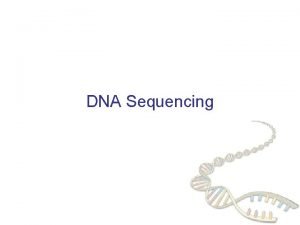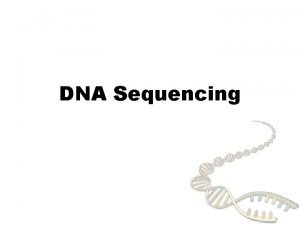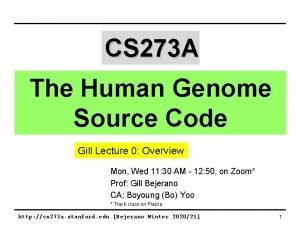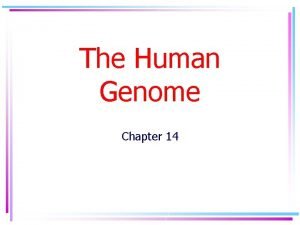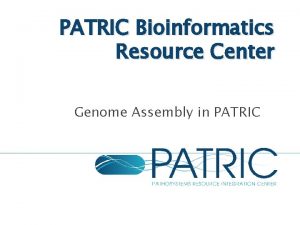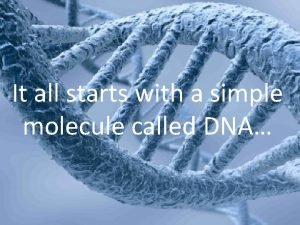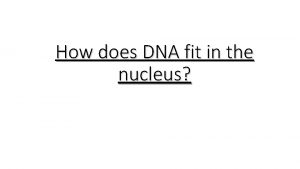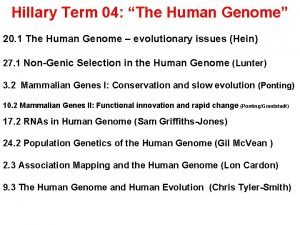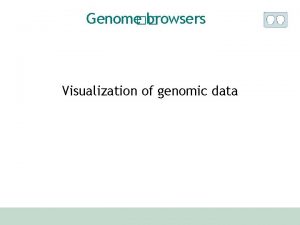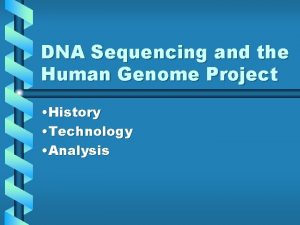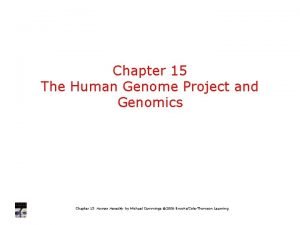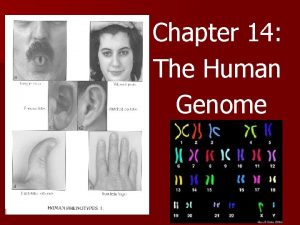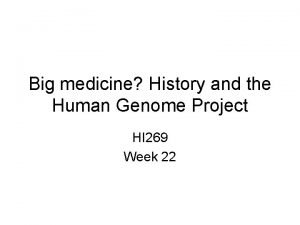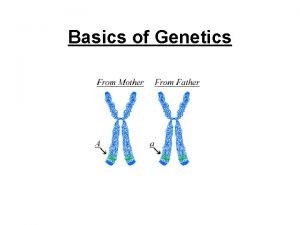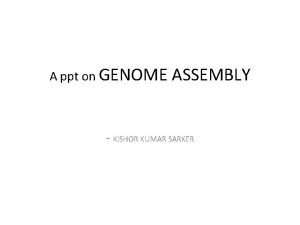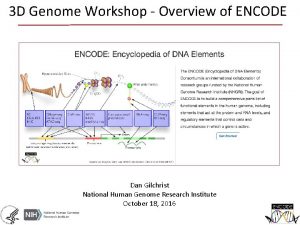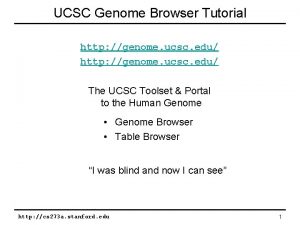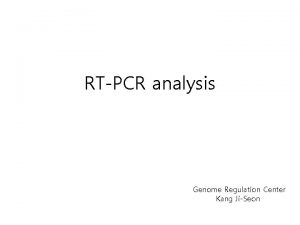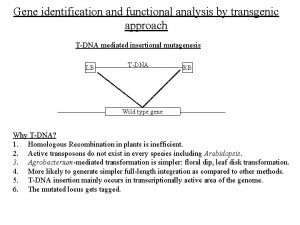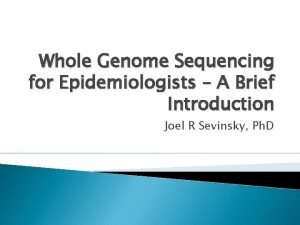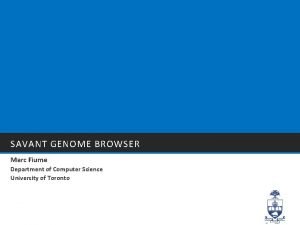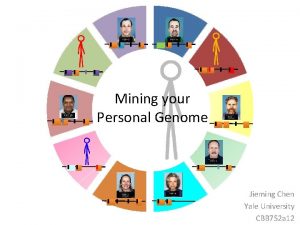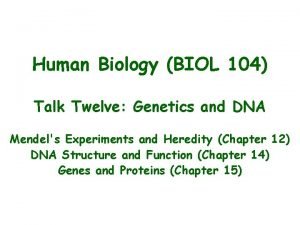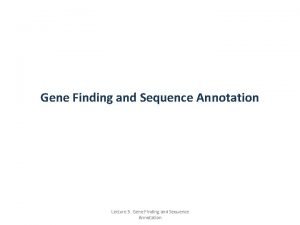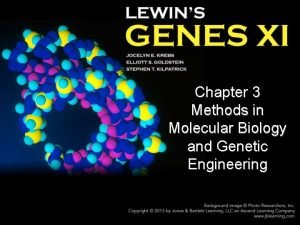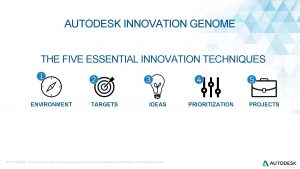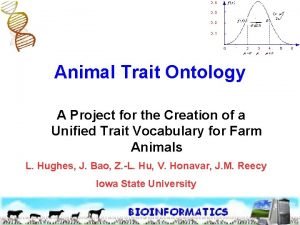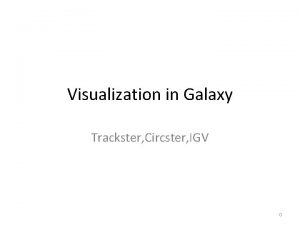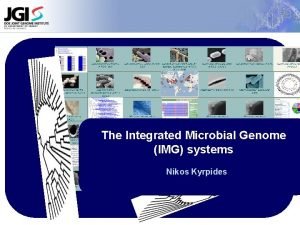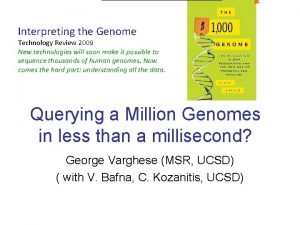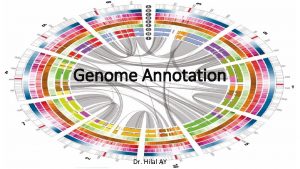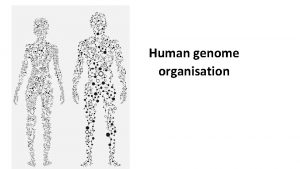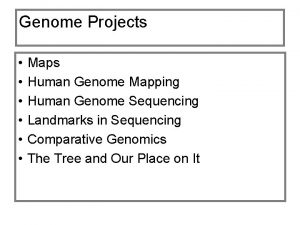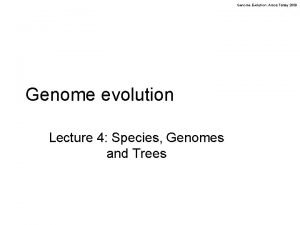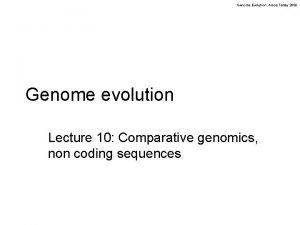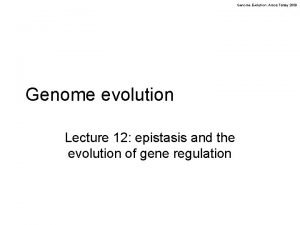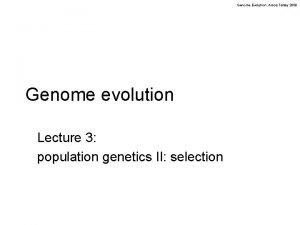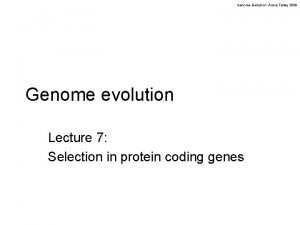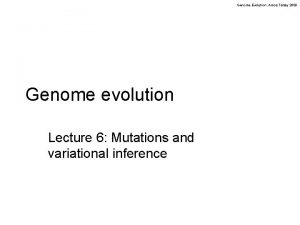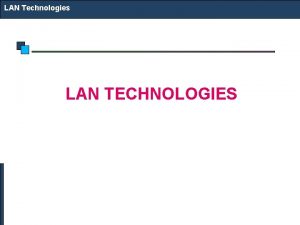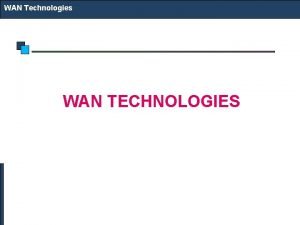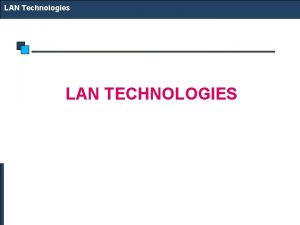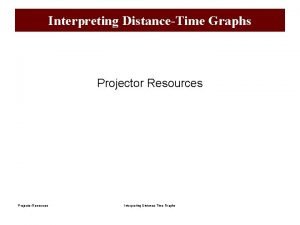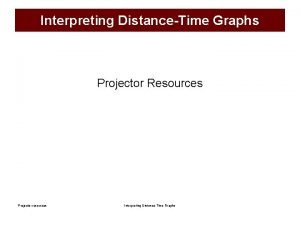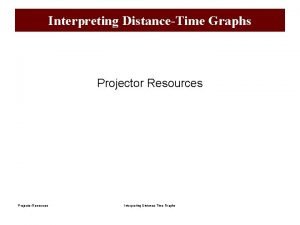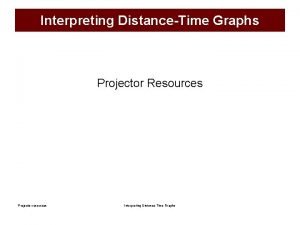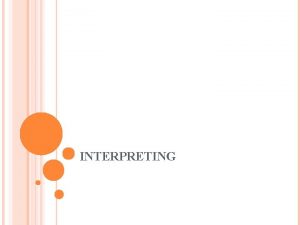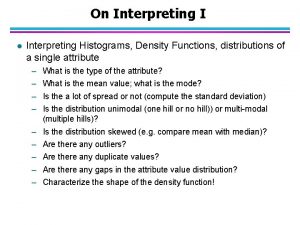Interpreting the Genome Technology Review 2009 New technologies

















































- Slides: 49

Interpreting the Genome Technology Review 2009 New technologies will soon make it possible to sequence thousands of human genomes. Now comes the hard part: understanding all the data. Querying a Million Genomes in less than a millisecond? George Varghese (MSR, UCSD) ( with V. Bafna, C. Kozanitis, UCSD)

Genome Trends • Cheap: cost falling faster than Moore’s Law: $100 M (2001) $10 K (2012) $1 K (2014? ) • Velocity: 30, 000 Genomes in 2011 versus 2700 in 2010. BGI: 40, 000 sequences per year • Medical Records: EMRs by 2014: HITECH Act • Cancer Genomics: killer app? – 8 M cases/year. Fundamentally genomic – Blockbuster drugs: Herceptin, Gleevec – Cancer Genome Atlas: 5000 cases 25, 000

Biology today: Data rich but. . . • Assemble: patients and normals (months) • Sequence: and align (1 day) • Analyze: Ad hoc program to suggest hypotheses on genetic/disease correlation. Iterate (months) • Share: Rare 250 G needs Fed. Ex (days)

Imagine instead research. . . Genomes Diseases G 1 L H G 2 H G 1 K L G 2 K B Pax 3, L? Location, Disease Gene Text Browsing

Imagine drug discovery. . . Genomes Diseases G 1 L H G 2 H G 1 K L G 2 K B Dels, H? Variation, Disease Locations Discovery

Reimagine Medicine. . . Genomes Treatments G 1 L H G 2 H G 1 K L G 2 K x B Iloprost SNP 30, B? Iloprost Variation, Disease Treatment Personalized Medicine

Biology tomorrow: Interactive analysis? • Assemble: patients, normals (Select: msec) • Sequence: align, store (precomputed) • Analyze: Generate hypotheses on genetic disease correlation. Iterate (queries: msec) • Share: Common? (share answers, queries: msec) Still present but done before insertion into database

Interactivity can be transformative Batch Timesharing Debugging Search

Initial database already. . . PGP 10 -> FIRST 10 VOLUNTEERS. . . NOW 2000 STRONG GENOMES + MEDICAL RECORDS, NO PRIVACY, CRUDE QUERYING

But existing systems do not suffice • SAM Tools: Focused on one variation (SNPs). All READs from 1 position • GATK: Iterator model with Hadoop Backend. Procedural. No querying • Sci. DB: Focus on telescopy and other use cases; common themes however.

So what’s needed for vision? • Specification of the APIs – GQL Proposal • Implementation (Structure) – App/Inference/Evidence/Instrument Layers • Implementation (Scaling, Performance) – Indices/Materialized Views/Parallelization • Standardizing Inference • Privacy, social aspects Important but ignored in this talk

Notwithstanding dangers. . . It’s a BOY! Smoker , Berkeley Prof, 60% chance of Alzheimer's by 40

Outline • • Background Specification Implementation Research Ideas

Background

Sequencing Process ACCCCAACCGAAA. . . GCCACA From Pa ACCCCAACCGAAA. . . GCAACA From Ma CCAA GCAA Reads Align with errors Reference With Short Reads, no assembly only alignment

Calling Variations: SNPs Location 2000 C Subject A Reference A C C Evidence All overlapping Reads

Complicated by Probabilistic Inference • Evidence: all overlapping reads • Inference: Statistical inference is needed because of confounding factors: – Wrong character can be read by machine – Mapped could map Read to wrong location – Subject can have 1 or 2 copies of variation • SNP callers vary but evidence is overlapping Reads Separate Evidence & Inference

Calling Variations: Deletions Reference Subject <X >X Paired Read of Subject Pair Mapped to Reference Evidence: All discrepant READs

Multiple Evidence for Deletion • Different Callers use different lines of evidence • Query Language should allow retrofitting new evidence Evidence 9/16/2020 GQL 1. Paired-end mapping 2. Split Reads 3. Reduced coverage 19

Other Use cases (in CS speak) • • 1. Line 55 in both my programs. Genotype 2. Any bugs in Function X of program Mutation 3. Are some functions replicated? Copy Number 4. Have some functions been inverted or other major structural change? Inversions • 5. Ascribe a set of lines of code to Mom vs Dad Phasing/Haplotypes • 6. Function X commented out? Methylations • 7. (Run time) How often is Function X called? RNA Transcript/Pathway Queries Gathered from Instrument Vendor

Specification

Argument for GQL and Layering • Huge data + msec access return answers only • Biologists want raw Reads (evidence) • Need at least Reads flanking a location (SNPs) and Reads mapped too far (Deletions) • Changing evidence retrieve Reads that match general predicate: GQL on BAM • GQL Intervals and interval join useful even for called variations: GQL on VCF • Separate evidence (deterministic) and inference (probabilistic). GQL gives clean API.

Layering today Application Layer Ex: cancer genomics, GWAS, pharmacogenomics All variations, VCF file Inference Layer GQL on BAM Evidence layer Variant Calling Ex: SAMtools, Callers, SV detection tools C Compression Layer All Reads, BAM file Mapping Ex: MAQ, bwa, SNAP… Raw Reads, FASTA file Instrument Layer Ex: Illumina, ABI, Roche, Pac. Bio

Idea 1: Split Evidence and Inference Application Layer Selected Variants by GQL Inference Layer Selected Reads by GQL Evidence layer Probabilistic: Bayesian, Frequentist etc. Split Variant callers into two layers Deterministic: storage, retrieval Compression Layer Mapping Instrument Layer Add compression via Slim. Gene, BAM, CRAM

Cloud Based Genome Analysis • Can implement Inference Layer in workstation and use GQL to query Evidence Layer in cloud. • Can also implement Inference in Cloud and have apps use GQL/VCF to query cloud Calling, Visualization (IL) Stored Genomes, ( EL) Cancer Mutations? Evidence? SP 3 Gene Deletion

GQL Table Schemas 9/16/2020 Reads location Intervals begin end User defined attribute 1 attribute 2 GQL strand length matelocation 26

Idea 2: Make Intervals first class • Input: two interval tables (e. g. genes, Reads). • Output: Pairs of interval, one from each interval if and only if they intersect. 1 1 2 a 9/16/2020 3 4 b 2 3 c 4 GQL 1, a a b c Map. Join 2, a 3, b 27

Merge Intervals • Given a collection of intervals, output merged representation of all intervals (e. g. , for Deletions). Interval Union Output More GQL details: “Which way to Genomic Information Age”, CACM to appear, use Google 9/16/2020 28

Progress so far • Compression Layer: – Tool Slimgene Illumina pipeline – 40 x compression without Quality Scores • GQL/EL Version 1. 0: – SNP style queries in less than 1 sec – All discrepant READs in 160 minutes. Slow! – Beyond SAMtools: GQL allows finding all Reads satisfying arbitrary predicate

GQL Deletion Script we ran include<tables. txt> genome NA 18506; Discordant = select * from READS where location>=0 and mate_loc>=0 and ((mate_loc - location > 1000 and mate_loc – location < 2000000) Select discordant reads // Turn each mapping into an interval, marked by the end-point of the pairedend reads Predicted_deletions = select merge_intervals( interval_count > 5) from Disc 2 Intrvl Identify regions with coverage >5 out= select * from MAPJOIN Predicted_deletions, Discordant using intervals(location, mate_loc) Select Reads in these regions 9/16/2020 GQL 30

Deletion Results • GQL found 113 deleted intervals on Chr. 1. • But Conrad et al. (Nat. Genet. 2006) used array hybridization to find only 8 deletions in Chr. 1 NA on same human. • Q: How do the two results compare? 9/16/2020 GQL Prior Results: Conrad et al Begin End 16887281 16896887 72537704 72585028 102599611 102603213 147303994 147313602 147373047 147395259 161154612 161166987 229387543 229391106 31

Probing further using GQL. . . • Map. Join with Conrad Intervals to find missing deletions (MD) in Conrad not in GQL Data • Select for discrepant Reads in MD. (None Found) • Concordant Reads within MD should have reduced count in MD. Selected Left and Right of MD and counted. (Did not find this effect) • NA 18506 Is the child of a Yoruban trio. Repeated Query in parent. Deletions in GQL analysis not in Conrad’s data were in parent. GQL allows interactive browsing of results

Implementation

Did you say millisecond access?

Indices, Algorithms • Location to Reads (SAMTools) • Predicate strength vectors – Always true: Coverage – Mate Pair Discrepancy: Deletions 0 1 2 1. . 1 2 3 2. . . • Interval Trees, Lazy Joins

Idea 3: Use Materialized views AACAGCACA. . . (Reference). . 5 Mate GCACA 88682 Full View: 11 bits/base Mate 5 GCACA Reduced: 3 bits/base 5 Mate Minimal: 64 b/Read Hierarchy of files may make query plan easy

Views on “rows” Coding regions Given a query and a set of views and indices stored in files, generate optimal plan

Deletion Script Again include<tables. txt> genome NA 18506; Discordant = select * from READS where location>=0 and mate_loc>=0 and ((mate_loc - location > 1000 and mate_loc – location < 2000000) Minimal view only Predicted_deletions = select merge_intervals( interval_count > 5) from Disc 2 Intrvl out= select * from MAPJOIN Predicted_deletions, Discordant using intervals(location, mate_loc) 9/16/2020 Reduced view only GQL 38

Why materialized views help DISK Minimal Full Reduced Minimal Gene • Expensive genome wide scans only need minimal view. 100 x smaller disk bandwidth • If only genes, another 100 x smaller. Can cache smallest views in main memory and SSDs. • Yet increase in file storage at most 2 x

Stir in, of course, parallel processing. . • Parallelize by chromosome or by slightly overlapping blocks (as in Sci. DB) • DSLs: Parallel processing with different backends: GPUs, Hadoop clusters. . . • Parallel patterns. One example: Interval trees used in Map Join • Joint work with V. Popov, O. Olokuton, S. Batzoglou

GQL could enable. .

Idea 4: Use GQL for Group Inference Strong Inference Instead, lots of genomes + weak inference: high SNR Like Google approach to spell checking: large data + crude learning

Other Benefits • Provenance: Publish GQL scripts for reproducibility in all Genetics papers. • Crowdsourcing: Automatically divide up patients among users. Random SELECT • Privacy: notions akin to Differential Privacy & k-anonymity

Summary • Vision: Hypotheses generation in minutes not months: interactive genetics. • Ideas: Evidence layer, GQL interval operators, file views, group inference • Database: nothing new in itself but crucial to get whole package right • Applications: Cancer Genomics, Newborn genomics, personalized medicine, GWAS

So who will build the Genomic

Available on the market Christos Kozanitis, who built GQL V 1

Thanks • Lucila Ohno-Machado, who heads the i. DASH project (NIH U 54 HL 108460), main funding. • Alin Deutsch, our database expert • Andrew Heiberg, who built the visualization tools that sit on top of GQL (not shown in this deck) • CALIT 2 (Larry Smarr, Ramesh Rao, Rajesh Gupta) for support & encouragement

Backup

Why is GQL not SQL • Since Reads and Genes can be abstracted as intervals, intervals are first class entities. • As in SQL, Select is fundamental operator to select Reads satisfying predicate • Given intervals, it makes sense to use Joins based on interval intersection, not equality. • Find it also useful to “compress” intervals using an Interval Union operator • Have written most use cases using GQL (see paper) which gives us confidence
 Semi-global alignment
Semi-global alignment Stanford
Stanford Bp statistical review of world energy 2009
Bp statistical review of world energy 2009 E commerce architecture and technologies in web technology
E commerce architecture and technologies in web technology Immigration and urbanization new technologies lesson 4
Immigration and urbanization new technologies lesson 4 New disruptive technologies 2021
New disruptive technologies 2021 New disruptive technologies
New disruptive technologies Genome
Genome Plant genome research program
Plant genome research program Human genome consists of
Human genome consists of Human genome size
Human genome size Mash bioinformatics
Mash bioinformatics Human genome size
Human genome size Human genome features
Human genome features Satellite dna
Satellite dna Hierarchical shotgun sequencing vs whole genome
Hierarchical shotgun sequencing vs whole genome Repeated sequences
Repeated sequences Hierarchical shotgun sequencing vs whole genome
Hierarchical shotgun sequencing vs whole genome Shotgun sequencing
Shotgun sequencing Dna
Dna Human genome project source code
Human genome project source code Chapter 14 the human genome making karyotypes answer key
Chapter 14 the human genome making karyotypes answer key Patric genome
Patric genome National human genome research institute
National human genome research institute Genome modification ustaz auni
Genome modification ustaz auni National human genome research institute
National human genome research institute Human genome project
Human genome project Genome klick
Genome klick History of sequencing
History of sequencing Human genome project
Human genome project Chapter 14 the human genome
Chapter 14 the human genome Human genome project
Human genome project National human genome research institute
National human genome research institute Genome assembly and annotation ppt
Genome assembly and annotation ppt Encode
Encode Ucsc genome browser tutorial
Ucsc genome browser tutorial Genome
Genome Genome identification
Genome identification Genome sequencing
Genome sequencing Savant genome browser
Savant genome browser Yale university poster
Yale university poster Ribosomes structures
Ribosomes structures Alternate splicing
Alternate splicing Gene finding
Gene finding Genome.gov
Genome.gov Genome research limited
Genome research limited Innovation genome project
Innovation genome project Genome mapping
Genome mapping Igv genome browser
Igv genome browser Img genome
Img genome
